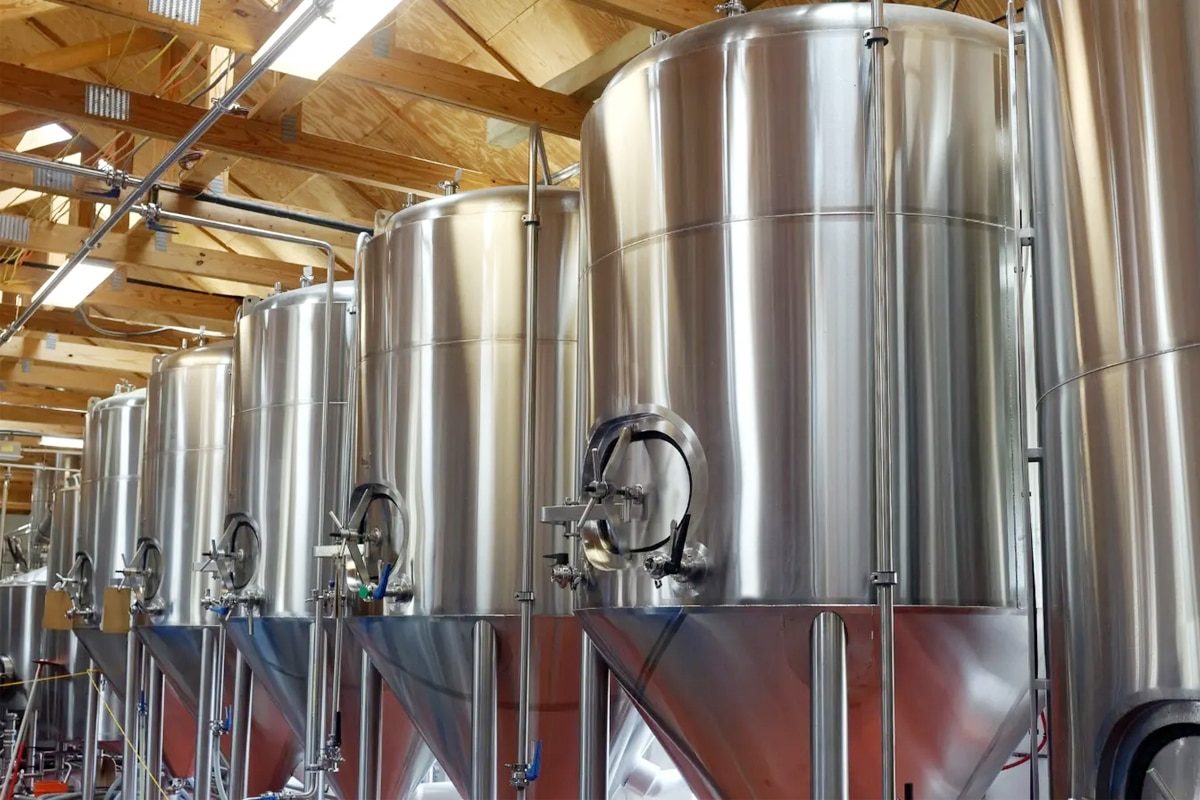
Fermentation Temperature Control: A Comprehensive Guide
In the world of commercial brewing, where every batch of beer represents a careful blend of science, art, and tradition, controlling fermentation temperature is a key factor in achieving a perfect brew. Within the confines of huge stainless steel vessels and state-of-the-art facilities, the alchemy of turning humble ingredients into a symphony of flavor and aroma relies heavily on maintaining precise temperature conditions throughout the fermentation process. In this comprehensive guide, we embark on a journey to the heart of commercial brewing, exploring the complexities of controlling fermentation temperature, a pursuit unlike any other in the world of craft beverages.
Comprehensive Guide
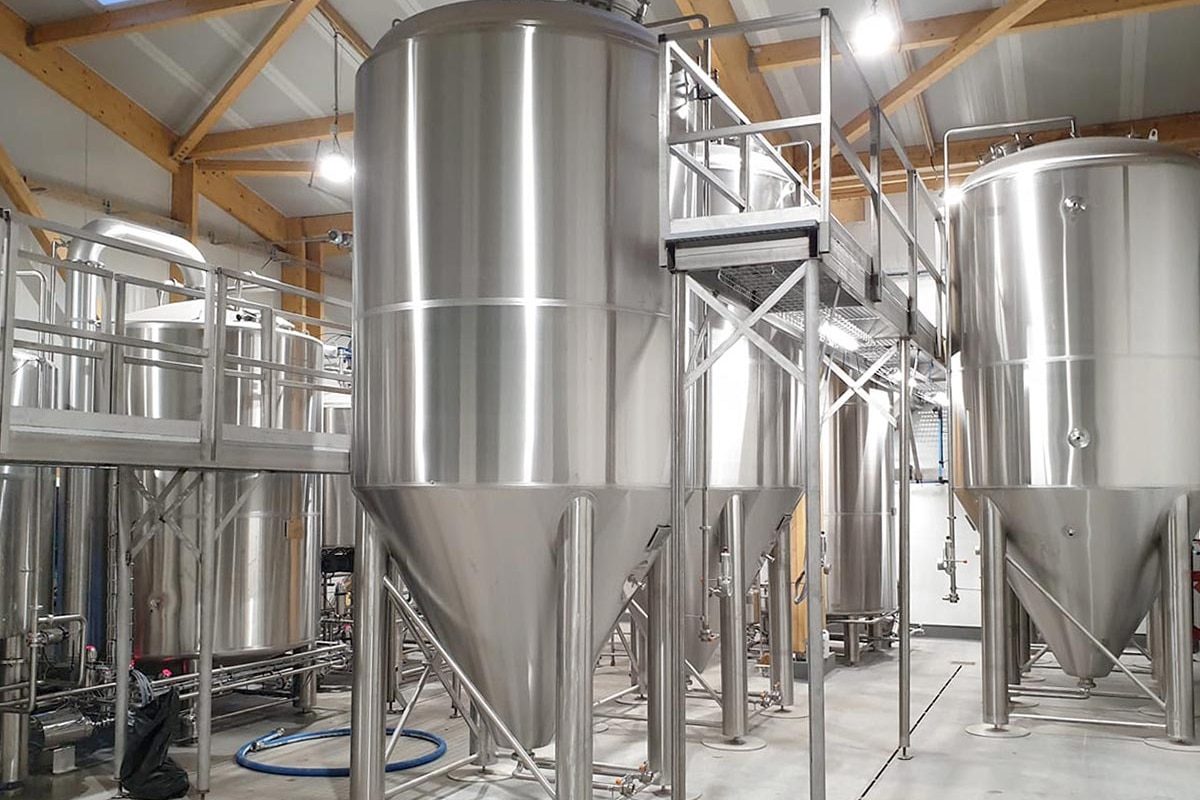
The Importance of Temperature in Fermentation
In the dynamic and diligent world of commercial brewing, precision is crucial. Flavor consistency cannot be compromised, and the role of temperature in fermentation becomes key in determining the quality of the final product. The controlled environment of the brewery is a symphony of stainless steel, technology, and expertise, with temperature during fermentation becoming a key protagonist in brewing exceptional beer.
Microbial Dynamics And Optimal Temperature Range
At the heart of brewing is understanding and exploiting the preferences of various microorganisms, especially yeast strains that are critical to fermentation. Each strain exhibits a unique growth temperature range, giving the beer its unique flavor, aroma, and character.
In commercial brewing, consistency is crucial. Different yeast strains work best within specific temperature ranges, and these strains are carefully selected to be consistent with the beer’s desired flavor profile.
- Ale Yeast: These strains typically thrive in the temperature range of 60-72℉ (15-22℃), promoting the production of fruity esters and the complex flavors of ales.
- Lager Yeast: Working at lower temperatures around 45-55℉ (7-13℃), lager yeast produces the clean, crisp mouthfeel associated with beer.
- Specialized Strains: In addition to this, specialized strains used for brewing sour beers, barrel-aged beers, and experimental styles require precise temperature control based on their unique requirements.
Enzyme Activity And Flavor Development
In the vast expanse of commercial fermentation vessels, where batches are measured in barrels and even larger units, the importance of enzymatic reactions during fermentation cannot be overstated. Temperature has a profound effect on these reactions, determining the rate at which enzymes break down complex compounds into simpler, more palatable forms.
The optimal temperature for enzyme activity varies depending on the specific enzyme at work. As the temperature fluctuates, the rates of these reactions change. The controlled environment ensures these reactions occur at the ideal rate, helping to develop the subtle flavors that distinguish great beers.
Quality Consistency
The stakes of commercial brewing are high, and a brand’s reputation is closely tied to the consistent quality of its products. Temperature control is not just a matter of preference, but a necessity to maintain the standards set for each brew. Temperature deviations can cause changes in flavor profiles, causing the product to deviate from the intended taste, aroma, and mouthfeel.
In pursuit of quality assurance, commercial breweries invest in advanced technology and well-designed fermentation chambers. These create a controlled and repeatable environment, ensuring each batch meets established benchmarks of excellence.
Reduce Odors And By-Products
Large-scale commercial brewing operations amplify the potential impact of temperature on by-product formation. High temperatures can induce the synthesis of fuel alcohol, producing a pungent or solvent-like taste, while lower temperatures may slow fermentation and cause off-flavors.
- Control Fusel Alcohols: Keeping fermentation temperatures lower for specific yeast strains minimizes the production of fuel alcohols, resulting in a smoother, tastier end product.
- Avoid Stagnant Fermentation: Adequate temperatures prevent dormant yeast and prevent incomplete fermentation.
Meet Industry Standards And Regulatory Compliance
In commercial brewing, meeting strict industry standards and regulatory requirements is non-negotiable. Temperature control during fermentation is not just a matter of taste, but a key aspect of adhering to established quality benchmarks and safety protocols.
The Connection Between Science And Art
In the world of commercial brewing, where creativity meets scientific rigor, the control of fermentation temperatures is a harmonious blend of art and precision. Brewers must navigate a complex dance of microorganisms, enzymes, and temperature gradients to produce a product that not only meets but exceeds the expectations of a discerning consumer base.
Essentially, across the vast spectrum of commercial breweries, temperature during the fermentation process becomes an integral component, guiding everything from raw materials to the refined, enjoyable beverages poured into glasses around the world. process. Mastering temperature control is not just a matter of preference, but an essential tool for brewers to use to create beers that consistently meet the highest quality and taste standards and reflect the essence of their brand.
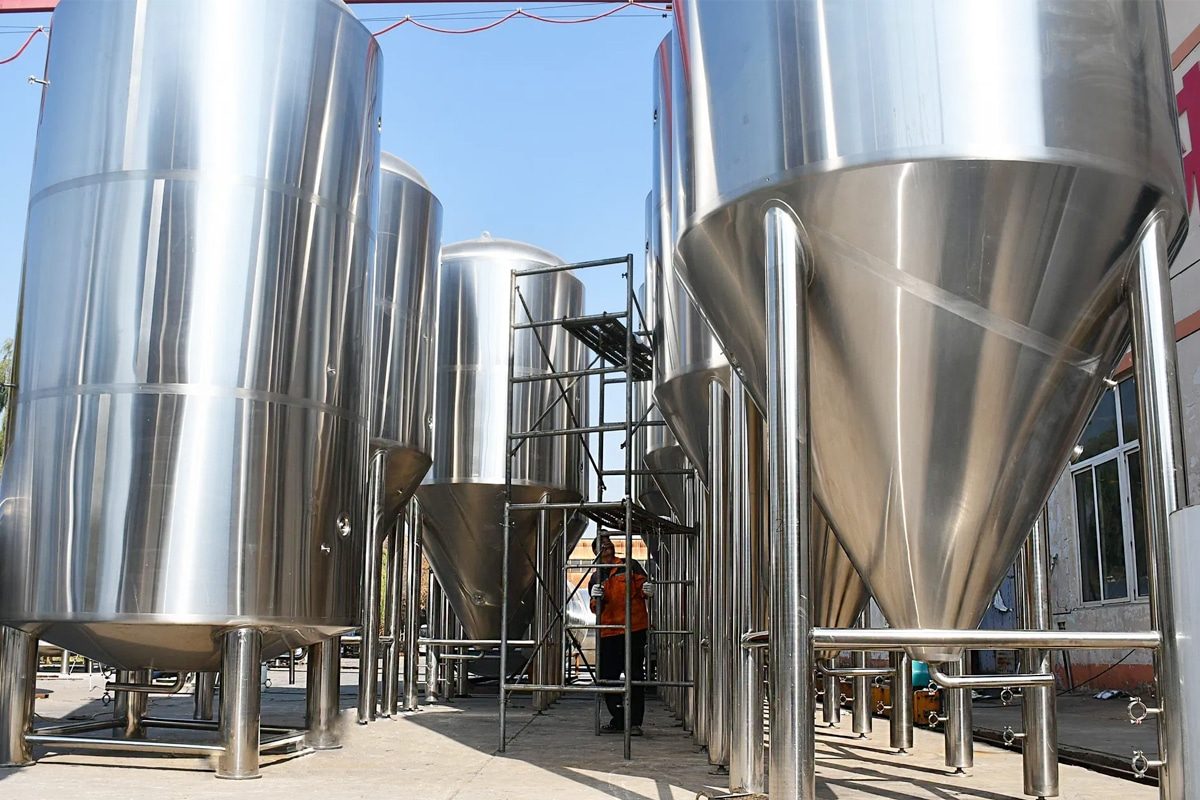
Control Fermentation Temperature
In the vast world of commercial brewing, where the pursuit of flavor consistency and quality is relentless, mastering the art of fermentation temperature control is a non-negotiable endeavor. Since large fermentation vessels convert wort into beer, it is crucial to implement practical and effective temperature control measures. Here, we take a closer look at the nuanced strategies commercial breweries employ to ensure precise fermentation temperatures, ensuring every batch meets strict standards of excellence.
Temperature-Controlled Fermentation Room
Invest in a dedicated fermentation room appropriate for the size of your commercial brewing operation. These chambers provide a controlled environment for the fermentation vessel, allowing precise temperature regulation throughout the brewing process. The temperature-controlled chamber is equipped with advanced sensors and systems to ensure uniform conditions, minimizing temperature fluctuations that can affect microbial activity.
Glycol Cooling System
For large-scale operations in fermentation vessels, glycol cooling systems offer sophisticated solutions. With a closed-loop system, glycol circulates through a jacket or coil around the fermentation vessel, absorbing excess heat and maintaining a stable internal temperature. This approach is particularly effective for breweries managing multiple fermenters simultaneously, allowing for independent temperature regulation.
Dual-Zone Fermentation Setup
If you have different yeast strains or microbial cultures within your brewery, consider implementing a two-zone fermentation setup. This allows brewers to control different temperature zones simultaneously to meet the different needs of various yeast strains and fermentation profiles. This is especially important for breweries that engage in mixed fermentations, such as those producing sour beers.
Temperature Probes And Monitoring Systems
The accuracy of temperature control requires vigilant monitoring. Breweries should invest in high-precision temperature probes and monitoring systems that provide real-time data on the conditions inside each fermentation vessel. These systems allow brewers to promptly identify and address any deviations, ensuring the fermentation process remains on track.
Insulation Technology
The external environment can affect fermentation vessels, especially in areas with fluctuating temperatures. The brewery uses thermal insulation technology, wrapping the fermentation vessels with special materials to protect them from external temperatures. This not only stabilizes the fermentation process but also helps improve energy efficiency.
Automatic Temperature Curve
Implement automated temperature profiles for different stages of fermentation. Temperature profiles are customized according to the specific needs of yeast or bacterial activity at each stage, ensuring optimal flavor development. Automation reduces the margin of error and increases the repeatability of a successful brewing process.
Heating Tapes And Wraps
For breweries operating in cold climates, sophisticated warming tools like heating tape or thermal cloth are essential. These devices provide targeted, continuous heat to the fermentation vessel, preventing cold temperatures from causing slow fermentation. Strategically apply heat where needed to ensure the entire batch remains within the desired temperature range.
Immersion Cooling
For breweries without a large temperature-controlled room infrastructure, immersion cooling offers a practical alternative. The fermentation vessel is submerged in a water bath, and a submersible pump circulates the water to absorb and dissipate heat. This method helps maintain stable temperatures in multiple containers simultaneously.
Strategic Fermentation Scheduling
Strategically plan fermentation schedules to accommodate ambient temperature conditions. Starting fermentation at a time of day when external temperatures are conducive to reaching the desired fermentation range minimizes the workload on the temperature control system and increases energy efficiency.
Regular Maintenance And Calibration
Establish regular maintenance and calibration procedures for temperature control equipment. Ensure sensors, controllers, and cooling systems are operating optimally to avoid unexpected fluctuations. Regular maintenance helps improve the reliability of your brewing process.
Measure Temperature Regularly
Consistency is not a one-time achievement but an ongoing effort. Regular temperature checks, whether automatic or manual, are built into the operational rhythm of commercial breweries. These checks allow brewers to detect any deviations early and make timely adjustments to maintain the desired temperature profile.
Adaptability to Batch Size Changes
Breweries typically handle different batch sizes. Ensure that the temperature control system can adapt to these fluctuations to maintain efficiency and accuracy regardless of the volume processed. This adaptability helps maintain consistent quality at different production scales.
Record Keeping And Data Analysis
In the pursuit of perfection, data is an invaluable ally. Breweries need to keep detailed records of each fermentation batch, including temperature profiles, deviations, and results. This historical data is a treasure trove of insights, allowing brewers to refine their temperature control methods over time.
In the intricacies of temperature control in commercial brewing, these practical tips act like a compass, guiding the brewer toward the pinnacle of precision. Whether it’s the implementation of advanced cooling systems or the meticulous calibration of temperature control tools, every element helps orchestrate predictability and perfection in fermentation. By integrating these techniques into an operational framework, commercial brewers can improve their processes, ensuring every batch of beer demonstrates mastery of temperature control in the pursuit of brewing excellence.
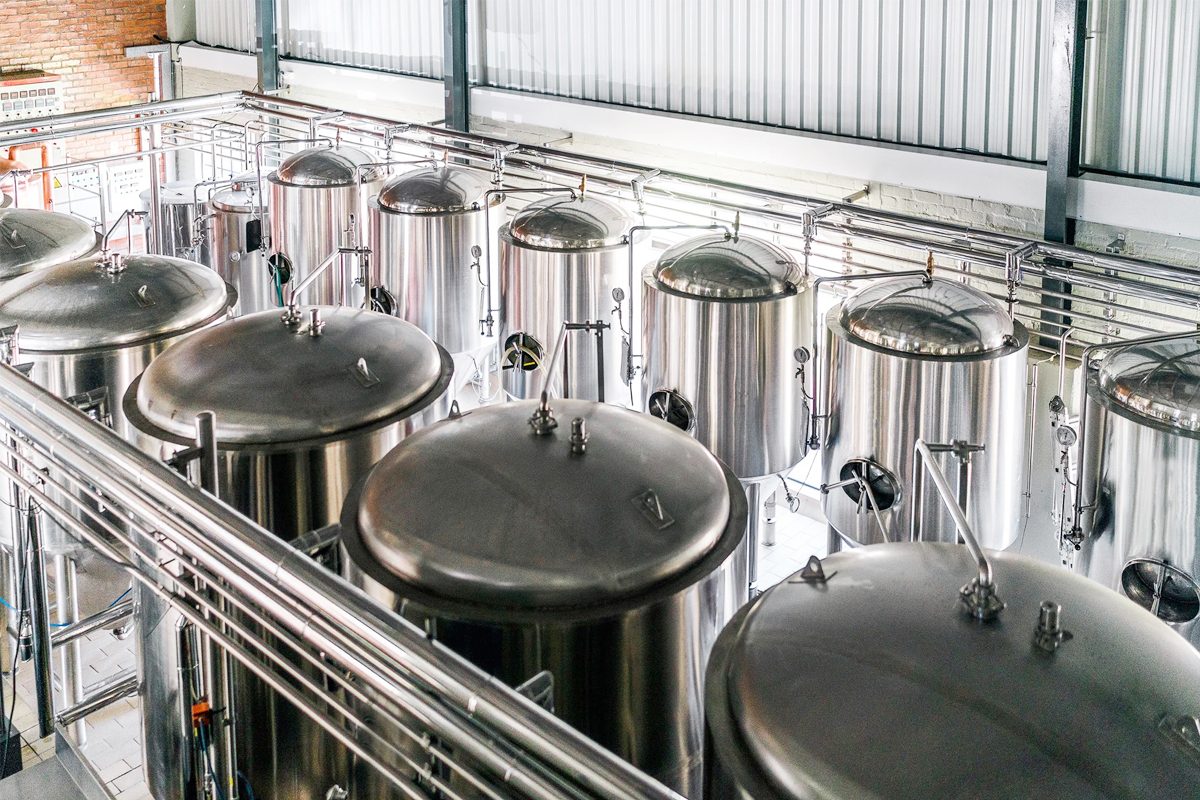
Advanced Temperature Control Technology
Ethylene Glycol Jacketed Fermentation Tank
The pinnacle of temperature control technology lies in the glycol-jacketed fermentation tank. The vessels are equipped with complex jackets through which ethylene glycol, a temperature-stable coolant, is circulated. This closed-loop system ensures precise control of fermentation temperature. The result is a level of control that is not only precise but also efficient, reflecting a commitment to quality and sustainability.
Variable Speed Pump And Flow Control
Fine-tuning temperature control to match the dynamic nature of fermentation is an ongoing challenge. Advanced breweries incorporate variable speed pumps and flow control mechanisms into their systems. This allows the brewery to regulate the rate at which coolant (usually glycol) flows through the jacketed vessel. By regulating flow, brewers can respond in real-time to the changing needs of the fermentation process, ensuring optimal temperature conditions throughout the process.
Automatic Temperature Analysis
The combination of automation and temperature control is a defining feature of advanced brewing operations. The automated system continuously monitors and adjusts the fermentation temperature according to predefined curves. These curves are carefully crafted by the brewery to guide temperatures through specific ramps and plateaus that optimize yeast activity and flavor development. This level of automation not only increases precision, it also allows brewers to focus on other aspects of the brewing process.
Temperature Regulation of Fermentation Chamber
In large breweries with multiple fermentation vessels, it is necessary to maintain a consistent temperature throughout the fermentation chamber. Advanced breweries invest in temperature regulation systems to control the ambient temperature throughout the fermentation space. This comprehensive approach ensures that every vessel, regardless of its location, operates within the specified temperature range.
Heatmaps And Computational Fluid Dynamics
In pursuit of temperature uniformity within the fermentation vessel, the brewery uses thermography and computational fluid dynamics. By modeling heat transfer and fluid movement within the vessel, the brewery optimizes vessel design, insulation, and cooling systems. This fine-tuning ensures that every corner of the container experiences a consistent temperature distribution.
Thermal Mass And Heat Exchange Technology
In large-scale brewing operations, maintaining consistent fermentation temperatures in large vessels is a unique challenge. To overcome this problem, breweries use thermal mass and heat exchange technology. These systems use large numbers of radiators or heat exchangers to stabilize temperature fluctuations within the fermentation vessel, ensuring consistent conditions throughout the brewing process.
Artificial Intelligence And Predictive Analytics
At the forefront of technology integration, some advanced breweries are leveraging artificial intelligence (AI) and predictive analytics to optimize temperature control. These systems analyze large data sets, including historical temperature records, to predict future trends and recommend adjustments. This proactive approach enhances the ability to predict and mitigate potential temperature-related issues before they impact final product quality.
Fermentation Temperature Chart
Achieving uniform temperature distribution within a fermentation vessel is a meticulous task. Advanced breweries utilize temperature mapping technology, including strategically placed sensors within vessels, to create a three-dimensional understanding of temperature changes. This granular data allows for precise adjustments and ensures that every corner of the vessel experiences consistent fermentation conditions.
Integrated Process Control System
A holistic approach to temperature control involves integrating it into the broader process control system. This requires linking temperature control to other brewing parameters such as pH, dissolved oxygen levels, and pressure. The synergy of these interconnected systems ensures a harmonious and controlled brewing environment, resulting in the consistent production of high-quality beer.
In the high-stakes world of commercial brewing, the pursuit of perfection drives the relentless search for advanced temperature control technology. From the synergy of cutting-edge technologies to insights gleaned from scientific inquiry, these technologies exemplify the brewery’s commitment to brewing the highest quality beers that will appeal to the taste buds of beer lovers around the world. As the brewing industry continues to evolve, temperature control methods will become more sophisticated, shaping the future of flavor innovation in commercial brewing.
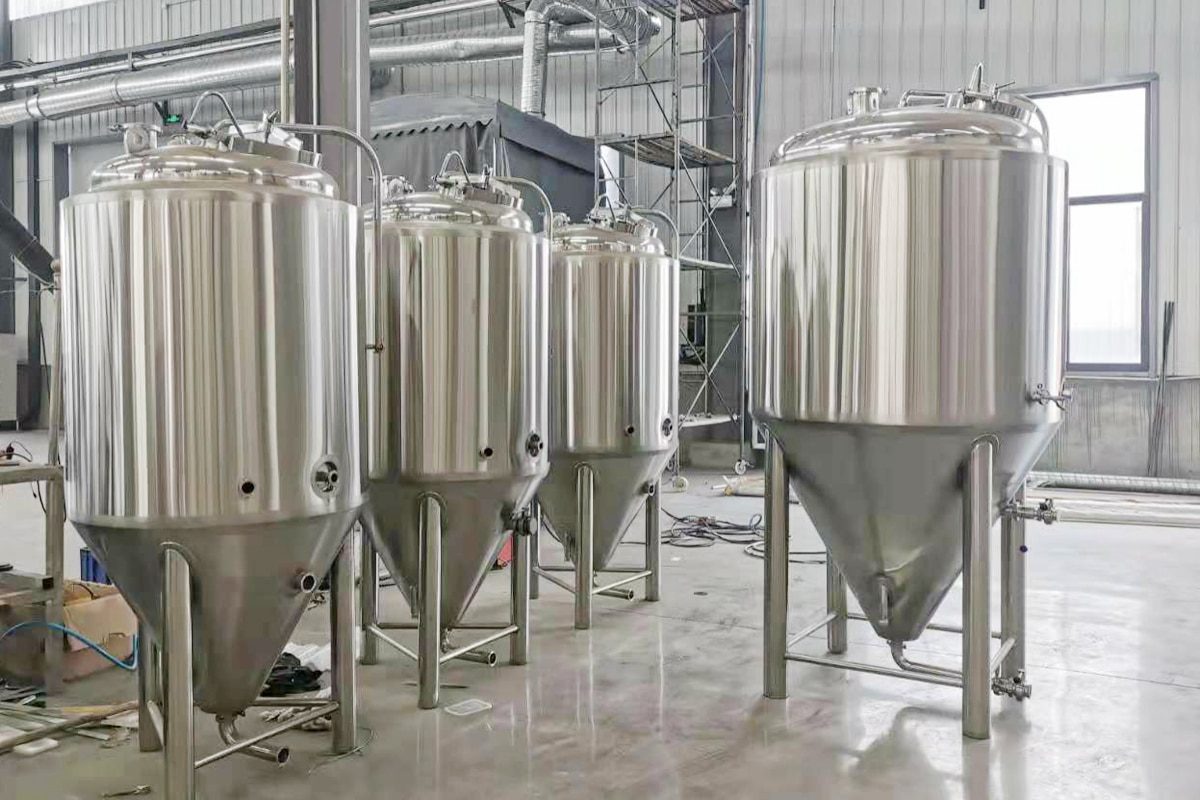
Temperature-Related Fermentation Issues
Stagnation of Fermentation
One of the most important temperature-related issues in brewing is the phenomenon of stagnant fermentation. This occurs when the yeast goes into dormancy prematurely, halting the fermentation process before reaching the desired level of attenuation. Stagnated fermentation can often be attributed to poor temperature conditions.
Mitigation Strategies:
- Gradual Temperature Increase: When fermentation is stalled due to low temperatures, gradually increasing the temperature within the optimal range can reactivate the yeast and resume the fermentation process.
- Precise temperature monitoring: Vigilant monitoring and quick adjustments to maintain the ideal temperature range for the yeast strain used can prevent stalled fermentations from occurring.
- Yeast Health Management: Regular monitoring of yeast health, coupled with the addition of nutrients or oxygen, can help prevent stress-induced stalling of fermentation.
Odors And Bad Odors
Temperature deviations can lead to odors and unpleasant aromas in the final product. Higher than optimal temperatures often result in the formation of fuel alcohol, which imparts a pungent or solvent-like flavor to the beer.
Mitigation Strategies:
- Temperature Control: Implementing precise temperature control measures, such as glycol cooling systems or thermal mass technology, can prevent excessive heat buildup, thereby reducing the creation of undesirable compounds.
- Yeast Strain Selection: In situations where temperature control can be challenging, selecting yeast strains that exhibit greater resilience to higher temperatures can reduce the risk of off-flavor formation.
- Temperature Gradient: Implement a gradual temperature gradient to positively influence yeast metabolism without triggering the development of off-flavors.
Changes in Flavor Profile
Inconsistent fermentation temperatures can cause flavor profiles to vary from batch to batch, departing from the beer’s intended characteristics. Even small temperature fluctuations during different stages of fermentation can affect the production of esters, phenols, and other flavor-active compounds.
Mitigation Strategies:
- Dynamic Temperature Profile: Using a dynamic fermentation profile involving controlled temperature changes at specific stages helps maintain a consistent flavor profile from batch to batch.
- Precise Monitoring And Adjustment: Regular monitoring and fine-tuning of the temperature control system ensures each batch remains within the target temperature range, thereby retaining the intended flavor profile.
Risk of Microbial Contamination
Temperature fluctuations can compromise brewing integrity by creating an environment conducive to microbial contamination. Changes outside the optimal temperature range may favor the growth of undesirable microorganisms.
Mitigation Strategies:
- Aseptic Procedures: Implement strict sanitation protocols and maintain a sterile brewing environment to minimize the risk of microbial contamination.
- Temperature Stability: Ensuring a stable and controlled fermentation temperature inhibits the proliferation of undesirable microorganisms, thereby maintaining the integrity of your brew.
Yeast Mutations And Phenolic Off-Flavors
Uncontrolled temperature changes, especially in warm conditions, can lead to yeast mutations and the development of phenolic off-flavors. This problem is exacerbated in commercial brewing environments with larger volumes and higher complexity.
Mitigation Strategies:
- Strict Temperature Control: Implement strict temperature control, especially in the early stages of fermentation, to prevent undesirable mutations.
- Yeast Strain Selection: Choose a yeast strain that can adapt to temperature fluctuations and is less likely to produce phenolic odors.
Impact on Flavor Consistency
Consistency is the cornerstone of commercial brewing success. Temperature-related fermentation issues pose a direct threat to the consistency of flavor profiles and can harm the reputation of a brand known for its unique and reliable products.
Mitigation Strategies:
- Data-Driven Brewing: Use data analytics and history to identify patterns and optimize temperature control strategies for consistent flavor results.
- Quality Assurance Protocol: A rigorous quality assurance protocol is implemented, including sensory evaluation and analytical testing, to detect any deviations in flavor consistency.
Inconsistent Temperature Distribution
Large fermentation vessels may experience uneven temperature distribution, resulting in localized changes in fermentation conditions. This inconsistency may be caused by factors such as vessel design, changes in thermal mass, or inefficient cooling systems.
Mitigation Strategies:
- Thermal Mapping: Use heat mapping technology and computational fluid dynamics to optimize vessel design and cooling systems.
- Controlled Agitation: Implement controlled agitation or aeration to promote even heat distribution within the fermentation vessel.
In the large and complex world of commercial brewing, temperature-related fermentation issues are challenges that require constant vigilance and strategic intervention. Mastering these challenges not only safeguards the integrity of each batch of beer but also takes the art of brewing to new heights. As the brewing industry evolves, brewers continue to refine their methods, ensuring that temperature-related issues are no longer an obstacle, but an opportunity for innovation and excellence in the pursuit of the perfect brew.
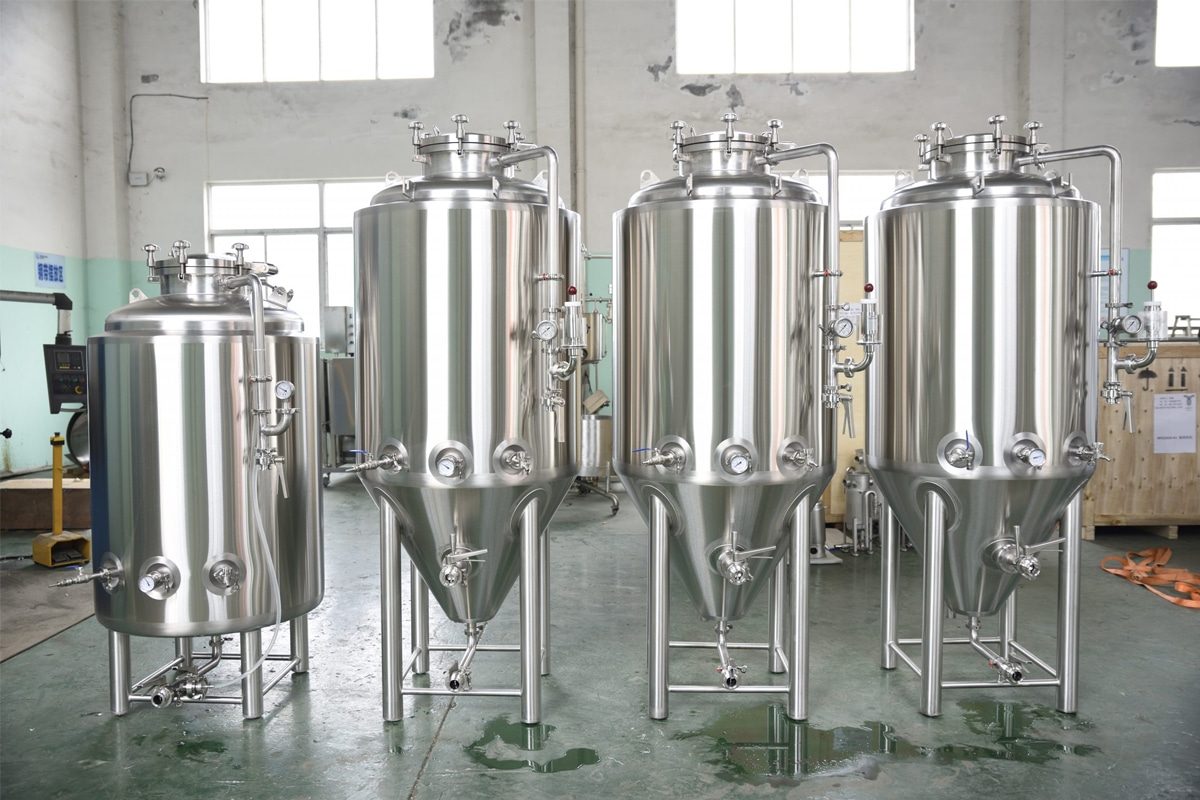
Summarize
In the commercial brewing world, careful control of fermentation temperature is key to brewing high-quality beer. This comprehensive guide delves into a range of technologies from basic practices to advanced innovations, demonstrating the industry’s commitment to precision. It emphasizes the important role temperature plays in flavor development, quality assurance, and consistency. To address temperature-related challenges, it provides tailored strategies to mitigate issues, ensuring every batch meets the highest standards. Ultimately, mastering fermentation temperature control in commercial brewing is not just a process, but an art that reconciles technique, science, and dedication to create liquid masterpieces.
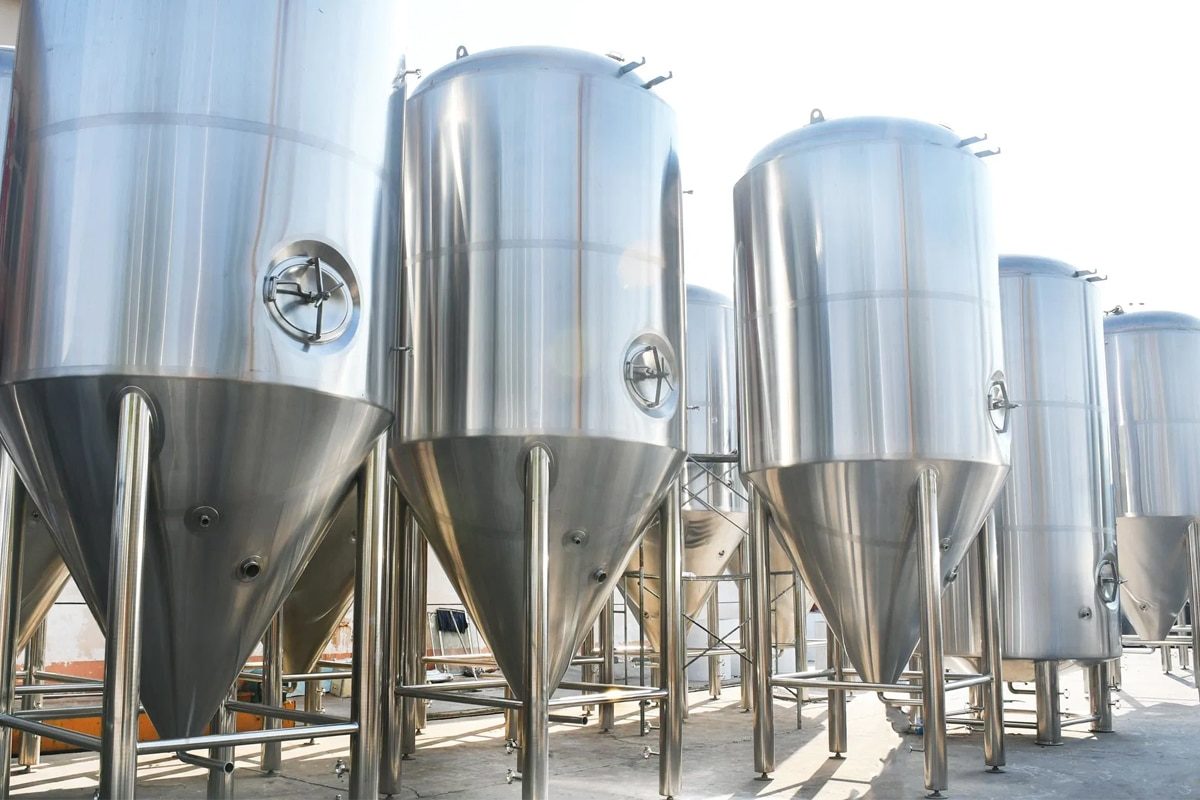
Get Fermentation Temperature Control Solutions
Brewing great beer requires precise control of fermentation temperature. At ZYB Craft, we understand the critical role fermenters play in achieving this precision. Our high-quality fermenters are designed to meet the exacting standards of commercial breweries, providing a reliable and efficient solution for temperature control. Contact ZYB Craft today to discover how our fermenters can enhance your brewing experience, ensuring every batch is a testament to craftsmanship and quality.



